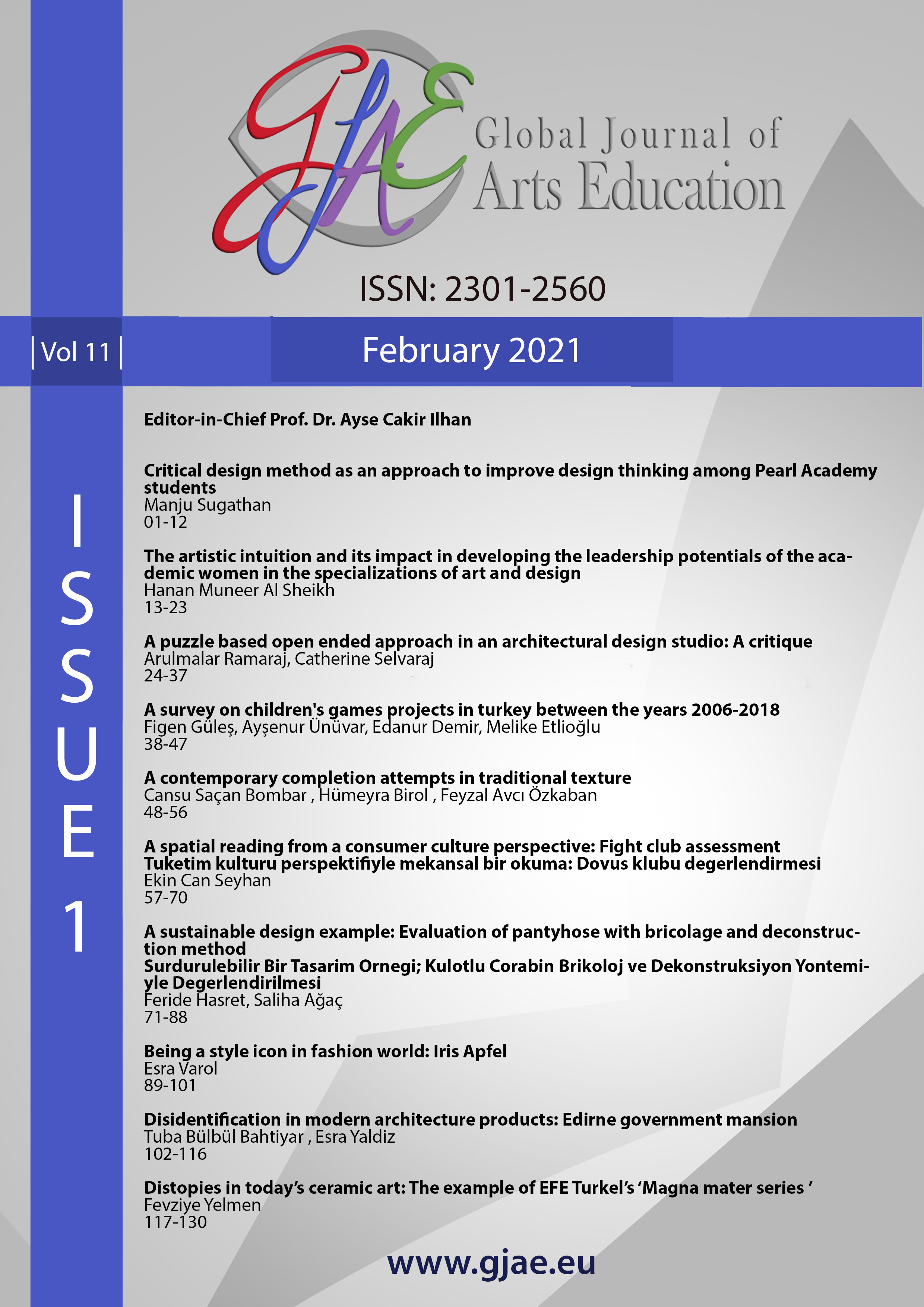A spatial reading from a consumer culture perspective: Fight club assessment
Main Article Content
Abstract
Abstract
In design readings, the relationship between place and the user of place is quite strong. Feelings that the user has against the place are considered as subheading not only in philosophy of place but also in other philosophies. It is much more powerful to establish this relationship especially on the basis of material-based philosophies, such as consumption culture. Fight Club was written by Chuck Palahniuk in 1996, and was filmed by David Fincher in 1999. The fact that the fighting club has two different interpretations creates a coherence produced in two different branches of art, supported by the author as opposed to creating a situation of inconsistencies and negativity between them. The story of Fight Club tells of the change of a character trapped in the consumption culture that began when he was introduced to a character with an anarchy spirit against this culture. In this story, the main character narrator and its places are presented with a critical point of view based on consumer culture. The Fight Club book and film tell the story of modern times man’s reflection, life experiences at the end and lives trapped within the culture of consumption in the eye of the creator of the story. The story is based on what the narrator character conveys to the reader and the viewer. In the story, the main character narrator and the places are presented with a critical point of view and based on consumer culture. This criticism is done while the narrator goes away from the culture which he is a member of after meeting Tyler Durden, who is quite contrary to this culture. The story changes through the narrator, with the perspective of before and after Tyler Durden. Although there are differences between the film and the book, both are based on the same text and fiction and the film was interpreted by the author as an improved version of the story. In this sense, two separate productions will be considered as a whole and the book and the film will be used as a common reading tool in this study. This is not a study on reading analysis of a book or a film or comparison between a film and a book, but a study on reading places and spaces. In the whole study, both common and different places in the book and the film will be discussed together. In this sense, in two different art branches; through literature and cinema; an integrated analysis will be conducted. With this approach, it is aimed to make a targeted reading of the places and the relationships. The aim of this study is to make a reading of the relationships of the Narrative character with places.
Keywords: Chuck Palahniuk, Fight Club, cinema, literature, design, consumer culture, modernism, place
Downloads
Article Details

This work is licensed under a Creative Commons Attribution 4.0 International License.
Authors who publish with this journal agree to the following terms:
- Authors retain copyright and grant the journal right of first publication with the work simultaneously licensed under a Creative Commons Attribution License that allows others to share the work with an acknowledgement of the work's authorship and initial publication in this journal.
- Authors are able to enter into separate, additional contractual arrangements for the non-exclusive distribution of the journal's published version of the work (e.g., post it to an institutional repository or publish it in a book), with an acknowledgement of its initial publication in this journal.
- Authors are permitted and encouraged to post their work online (e.g., in institutional repositories or on their website) prior to and during the submission process, as it can lead to productive exchanges, as well as earlier and greater citation of published work (See The Effect of Open Access).

